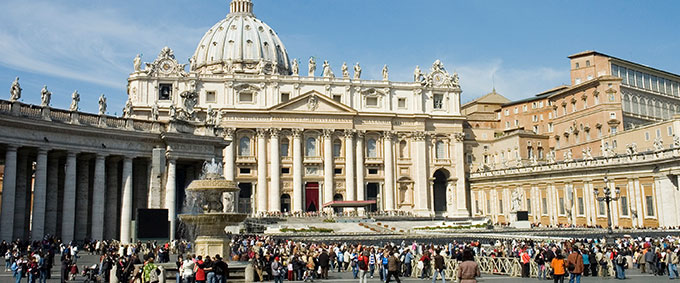What Is a Papal Conclave? and Frequently Asked Questions About the Pope

The Catholic cardinals will meet in a papal conclave in May, 2025, to select the 267th pope of the Roman Catholic Church. The pope is also the Bishop of Rome and successor to the Apostle Saint Peter.
What is a papal conclave?
A papal conclave is a meeting of the College of Cardinals whose responsibility it is to elect a new pope. During the conclave the cardinals are not allowed to communicate with the world. They stay in a two-room suite in the Vatican. The cardinals take an oath that the proceedings of the conclave will remain secret. After each vote during the conclave, smoke from the Vatican signals whether someone has been elected. Black smoke means no one was elected, and white smoke means we have a new pope.
Learn what happens in a papal conclave. Joe Paprocki, DMin, explains in seven brief videos in the playlist below. Each video will automatically play in order, or navigate the playlist with the menu at the top right of the video player.
Who are the bishops?
Bishops are the principle leaders and teachers of the Catholic faith. They are the successors of the apostles and minister to the people of their local dioceses in Jesus’ name. It is their ministry to make sure that the Church teaches a correct understanding of the faith handed down to us from the apostles. Bishops in the Catholic Church belong to the college of bishops, which is the assembly of bishops from all over the world. The college of bishops, with the successor of Peter at their head, has full authority over the whole Church. In order to exercise this authority, they must always have the agreement of the successor of Peter. The Holy Spirit is with the pope and the bishops—as leaders of the Church—so that they can proclaim and teach the Gospel.
What is the importance of the Bishop of Rome?
Only one person has complete authority over the whole Church: Jesus Christ. He is the head of the Church. But Jesus has ascended into heaven and sits at the right hand of the Father. Someone here on earth is needed to govern the Church. Jesus assigned this task to Peter and his successors. Peter was chosen by Jesus to be the leader of the apostles (Matthew 16:18-19). The successor of Peter is the Bishop of Rome. This was the diocese where the Apostle Peter lived in his final years and was martyred, probably during the Emperor Nero’s persecution in about 65. The Bishop of Rome carries forward in time the ministry of Peter to lead the Church.
What is the pope’s full title?
The pope’s full title is “His Holiness Pope [NAME], Bishop of Rome, Vicar of Jesus Christ, Successor to the Prince of the Apostles, Supreme Pontiff of the Universal Church, Primate of Italy, Archbishop and Metropolitan of the Roman Province, Sovereign of the State of the Vatican City, Servant of the Servants of God.”
Why does the pope have the title the “Vicar of Christ”?
Bishops, like the kings of the Old Testament, govern God’s people. Jesus Christ is head of the Church. Jesus made it clear that he wanted his “vicars,” those who represent him in governing the Church, to act as servants rather than as masters. The Bishop of Rome is the “Vicar of Christ” for the whole Church. In a particular diocese, the bishop is a “Vicar of Christ” because Christ is head of the local church, but the bishop represents him in leading the Church. The pope and bishops serve the people by guiding them to live in peace with each other and by working with them, together with the priests and deacons, to make the world a place of justice and harmony.
Why do we call the pope "the Holy Father"?
We call the pope "the Holy Father" because as Catholics we believe that we are personally connected to him. That is where the title “pope” comes from—the Italian word for “papa.”
What are the pope’s duties?
The pope is the shepherd or pastor of the whole flock that is the Church. The word “pastor” comes from the Latin word for “shepherd.” As our pastor or shepherd, the pope is the one who looks out for our well-being. Each diocese has its own pastor, the bishop, and bishops call priests to be pastors of individual parishes. But the pastor of all Catholics is the successor of Peter, the Bishop of Rome. Like all bishops, the pope carries a staff called a crosier when celebrating the liturgy. This is symbolic of a shepherd’s staff that signifies his duties as pastor for the whole Church.

